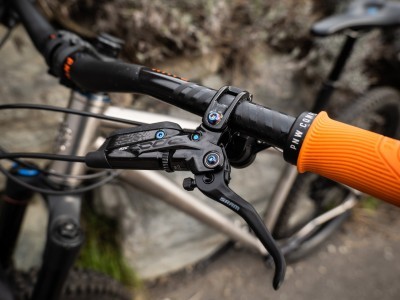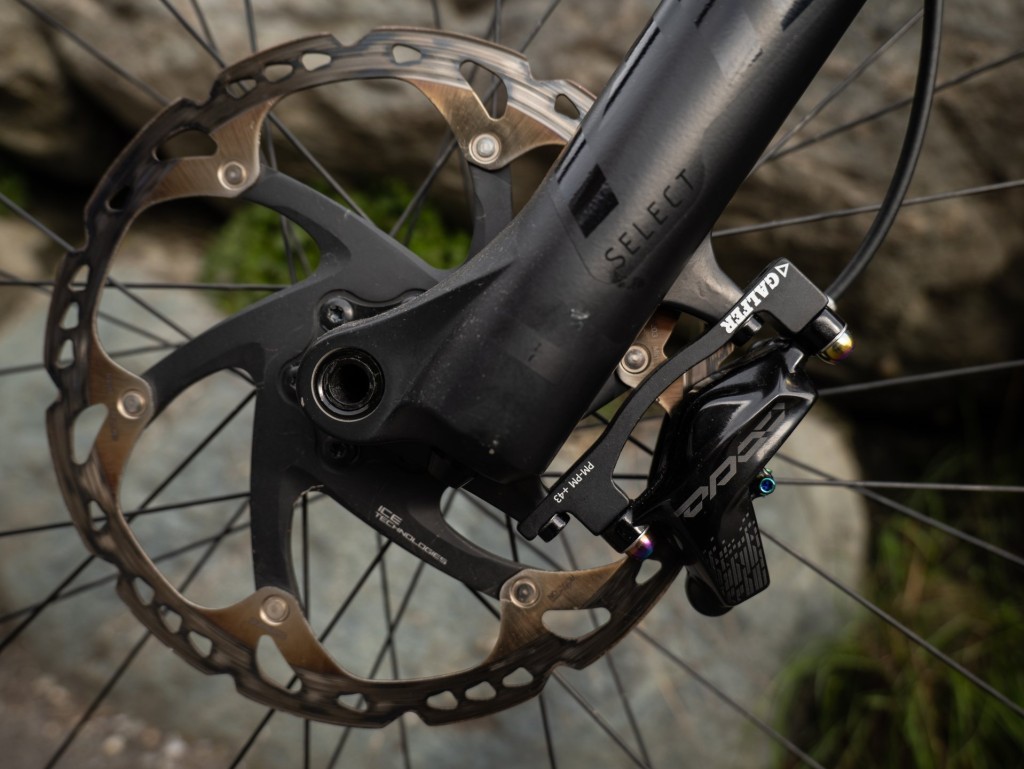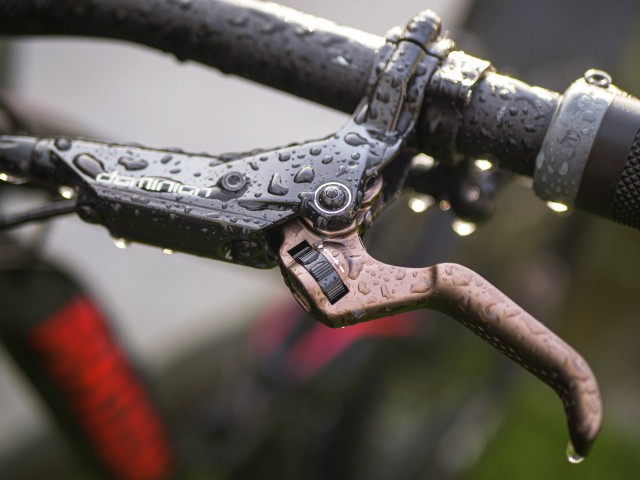At a glance
The Code RSC’s are Sram's top of the line, heavy duty brakes aimed at the Enduro and Gravity crowd. The 4 piston calliper brakes rely on DOT 5.1 brake fluid and have a bite point adjustment as well as a tool free reach adjustment. Price: approx 300 EUR per wheel
Buy Brakes on
The product
The classic Sram Code brakes are the top end line of stoppers from the red giant. Their RSC model comes with a bunch of features and has been recently reworked for improved performance. Let’s go over the stats.
With rounded corners, no sharp edges, no lever rattle, and bearings rather than bushings at the lever pivot, the lever body is well-built and has a lovely, quality finish. When you squeeze the lever, SRAM's SwingLink linkage, which is housed in the lever, accelerates the pistons' relative movement early in the stroke to connect the pads to the rotor and then slows it down to increase modulation. Since the reservoir is bigger than it was in the earlier iteration of the Code, there is more fluid volume and a marginal increase in heat resistance.
The two-piece mechanism, which is attached at the calliper end by a screw-in pin and safety clip, houses four pistons and a sizable single pair of pads. The brake sensation and how the pads contact the rotor are impacted by the pistons' slightly varying sizes.
According to SRAM, their larger diameter over the prior model boosts power by 15%. The brake hoses exit the callipers through an adjustable banjo, which aids in proper cable routing. For most extra-large bikes, the 950mm and 1,950mm hoses that came with mine are sufficient.
The SRAM Bleeding Edge tool makes it very simple to bleed the brakes. The calliper syringe on this set of syringes has a push-in nipple on the end. The procedure includes more steps than typical bleed procedures, but they are simple to follow, and the first time I used them I got a respectable bleed.
Although the whole official SRAM Bleed System with Bleeding Edge Tool is somewhat pricey, pieces can be purchased separately, and aftermarket versions are also offered. It is wise to get a tool for this because these brakes are equipped with DOT 5.1 oil which attracts moisture over time that decreases the brake performance.
Out on the trail
The Sram brakes have always had a particular feel to them and these are no different. The lever actuation is not the lightest on the market but they do grip nicely and the alloy lever has a rigid feeling to it when you grab a handful.
When it comes to the bite point they have always been a bit more vague and mushy compared to for example the Shimano or Magura ones. Some say it makes it easier to modulate and scrub off speed without locking up, but I guess it comes down to what you are used to. If you’re looking for a hard on / off switch type feeling of pads hitting the rotor, the Codes are not for you.
In the power department the Code RSC’s have got plenty. It’s not the most powerful brake on the market, but more than enough to slow you down and lock the wheel or throw a nose wheelie. We did experience some fading on the longer descents however (running 200mm rotors), perhaps a different brake pad can limit this.
The lever adjustment was spot on and gave every test rider the opportunity to set their levers up the way they liked. Actuating the adjustment knob was a bit fiddly though. The bite point adjust gave some adjustment, but in my opinion it was quite minimal.
Over time the brakes held up quite nicely, but we did notice two things. Firstly, with the pads about ⅔ worn the bite point of the brakes seem to get closer to the bar. You can adjust minimally, but at some moment you need to decide to either bleed the brakes or replace the pads. Now if you add more oil to the system, you will have a firm bite point but can’t replace the pads without removing the excess oil. If you swap pads you bin a pair that could have had a few days more riding in them.
Second, you really need to keep your callipers clean with the RSC’s. Brake dust easily adds up and can create the dreaded ‘sticky piston’ syndrome overheating your brakes and negatively affecting brake performance. Good news is that job is easy to do, just a regular clean with some brake cleaner and you’re off.
Verdict
After trying many Sram brakes, these are by far my favourite. They are powerful, adjustable and have very good modulation. Also on the maintenance side they are much more reliable then other Sram models out there. Price wise they’re not a bargain, but they’re well built and should last you a long time. Thumbs up!
Buy Brakes on
This review was in Issue 74 of IMB.
For more information visit SRAM MTBRelated
By Jarno Hoogland
Jarno's life has revolved around two wheels ever since he swung a leg over his first BMX at age 4. After a BMX and DH racing career, he moved on to work for bike shops, distributors and brands before ending up in the editors seat at IMB. Based in the ultimate testing ground in the Swiss mountains, he runs his guiding operation and makes sure every IMB issue is filled with top notch content.




















